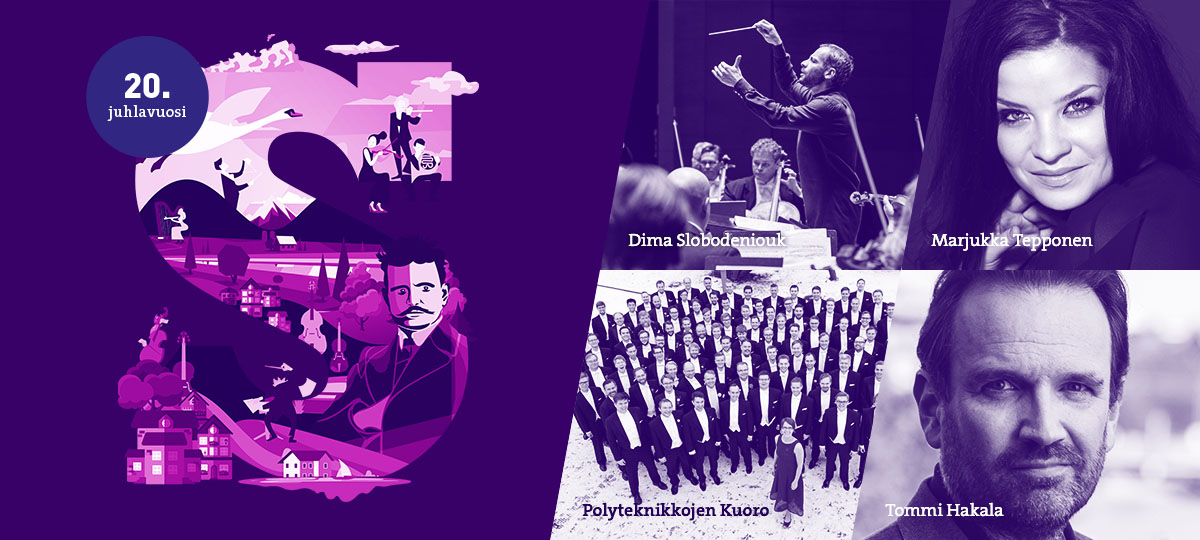

The symphony briefly had a nickname, Lucus a non lucendo, an expression that literally means "a grove from not shining", suggesting, in this case, a place where light does not penetrate. It has absolutely nothing of the circus about it." Later, when asked about the symphony, he quoted August Strindberg: "Det är synd om människorna" (One feels pity for human beings). He said in a letter to his friend (and biographer) Rosa Newmarch about the symphony: "It stands as a protest against present-day music. In the year before beginning the symphony, Sibelius had met many of his contemporaries in central Europe, including Arnold Schoenberg, Igor Stravinsky, and others his encounter with their music provoked a crisis in his own compositional life. His brother, the psychiatrist Christian Sibelius (1869–1922), was one of the first scholars to discuss psychoanalysis in Finland. Even Sibelius himself called his composition "a psychological symphony". Tawaststjerna, the symphony reflects the psychoanalytical and introspective era when Sigmund Freud and Henri Bergson stressed the meaning of the unconscious, and he calls the Fourth Symphony "one of the most remarkable documents of the psychoanalytical era". Timothy Day writes that "the operation was successful, but he lived for many years in constant fear of the tumour recurring, and from 1908 to 1913 the shadow of death lay over his life." Other critics have heard bleakness in the work: one early Finnish critic, Elmer Diktonius, dubbed the work the Barkbröd symphony, referring to the famine in the previous century during which starving Scandinavians had had to eat bark bread to survive.Īccording to Sibelius' biographer Erik W. the sensing of an atmosphere which was to explode in 1914 into a world war." Sibelius had also recently endured terrors in his personal life: in 1908, in Berlin, he had a cancerous tumour removed from his throat.

#SIBELIUS 5 SINFONIA FULL#
is full of a foreboding which is probably the unconscious result of. Many commentators have heard in the symphony evidence of struggle or despair.

The glockenspiel tries in vain to hail the momentary establishment of A major but in the end it is the insistence of C ♮ (the note with which the work so strikingly began) that forces the movement and the symphony to close in a desolate A minor, without melody or rhythmic pulse. You can use it on the new Leopard operating system (Mac OS X 10.5), and it also has improved tab, mouse and scroll wheel support.Audio playback is not supported in your browser. It’s now a Universal Binary application, so it runs at top speed on Intel-based Macs. Reprise fontIncredible new hand written-style fonts, chord symbols, note names, functional analysis, early music and avant garde symbols, new plug-ins with undo… Sibelius 5 has it all.Īs usual, Sibelius 5 supports the very latest technologies. Sibelius 5 also offers users complete and easy layout control, covering bar and page numbering, blank pages, sheet music margins and more – making it easier than ever to produce beautiful scores. And changing instruments on a score is now equally simple. Just copy the music you want to appear in the cue, and choose Paste As Cue. So now you can just think about the notes, and forget about page layout until you’re ready to print.Ĭreating cues in parts is now the work of a moment. Instead of being chopped up into systems and pages, the music is shown in a single, infinitely-wide strip – far easier to read and navigate around. Panorama is a new, clearer way of viewing music in Sibelius. They cover all styles of music and help provide useful inspiration for your compositions.Ī huge variety of VST instruments and Audio Unit instruments are available from numerous manufacturers – and now Sibelius 5 can play back using any of them! So you can hear your scores played back by the world’s most advanced sound libraries. With Ideas Hub, you’ll never let another flash of inspiration slip by again.Īs well as your own ideas, Ideas Hub comes preloaded with over 2000 ready-made ideas. That's why Sibelius 5 gives you the Ideas Hub - the easy way to capture, tag, find and bring together your musical ideas. We’ve listened to what Sibelius users have been asking for, and have spent many months adding fantastic enhancements for writing music, the latest technologies such as VST & Audio Units, and completely new features, such as the Ideas Hub. Sibelius 5 represents the latest advance in the world’s favorite music software.


 0 kommentar(er)
0 kommentar(er)
